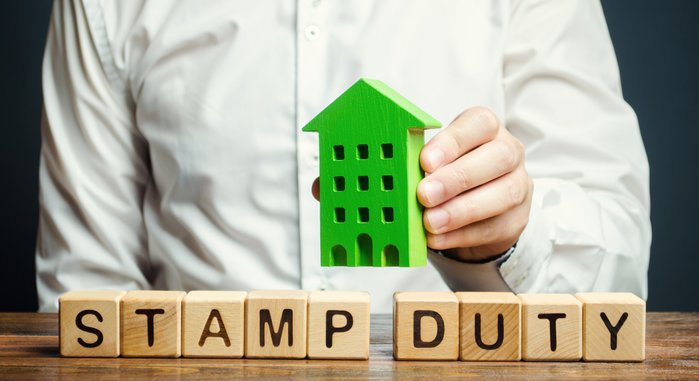
From today, the nil rate band for Stamp Duty Land Tax (SDLT) will reduce to £250,000 until the Stamp Duty holiday comes to a complete end in September. We look at what this means for first-time buyers, or anyone currently buying or looking to buy a new-build home and hoping to benefit from stamp duty savings. Find out more…
Phasing out the Stamp Duty Holiday
The Chancellor agreed back in March this year to phase out the stamp duty holiday gradually. The overall concern was that without a smooth transition to normal levels of stamp duty, property transactions might be at risk with people pulling out should they not meet the deadline. That, and the potential cliff-edge end to what has been an incredibly busy time for all those involved in the property market, from estate agents to conveyancers, even removals companies, would be too risky.
It was reported in March that estate agents, and conveyancing solicitors, were experiencing a tidal wave of instructions as buyers and sellers rushed to complete sales in time for the original stamp duty deadline. Hence an extension was agreed.
The impact of the Stamp Duty holiday
The stamp duty holiday came to fruition in July 2020 as a means to boost the property market in light of Covid-19. It’s aim was to support buyers whose finances might have been impacted by the pandemic, with savings of up to £15,000 available for those buying homes. Since then, property transactions, and prices have gone on to reach unprecedented levels. The stamp duty holiday has most certainly played its part in this. Although forecasters are predicting a steady continuation of property sales once the stamp duty holiday ends, as other factors such as demand for space, household savings, and more competitive mortgages come into play.
A tapered deadline
Since July 2020, buyers haven’t had to pay any stamp duty on the first £500,000 of the price of a property they are buying. However, this changes from today when stamp duty will now come into play on properties above £250,000.
Here is an outline of the rates you can expect,
£0 – £250,000 = 0%
£250,001 – £925,000 = 5%
£925,001 – £1.5m = 10%
Then, from 1 October 2021, stamp duty is set to return to normal levels and pre-pandemic rates. So, the point at which stamp duty will be paid, will go back to £125,001, with rates as follows,
£0 – £125,000 = 0%
£125,001 – £250,000 = 2%
£250,001 – £925,000 = 5%
£925,001 – £1.5m = 10%
What does it mean for First-time Buyers?
The rules are slightly different if you are someone buying your very first home. For first-time buyers, from 1 July 2021, there will not be any need to pay stamp duty on property purchases up to £300,000.
For homes between £300,001 – £500,000, you will pay 5% stamp duty land tax.
Thereafter, if you look to buy a home above £500,000, you will pay the same as those who have bought property before.
Of course, there are other opportunities open to first-time buyers, with the new version of Help to Buy which is now only open to first-time buyers and comes with regional price caps. Plus, there are 95% mortgages available under the new government guarantee scheme which started in April this year.
Stamp Duty support from Housebuilders
We have seen in the past, and it could well be something we see again, that housebuilders incentivise sales of homes on their developments by covering the stamp duty costs for buyers. From time to time, some housebuilders offer to help with the stamp duty costs on selected properties. It will be worth waiting to see what decisions are made in the next few months, based on economic and property market activity. With both the stamp duty holiday phasing out, and the furlough scheme also due to come to an end, will sales of new-build homes be affected?